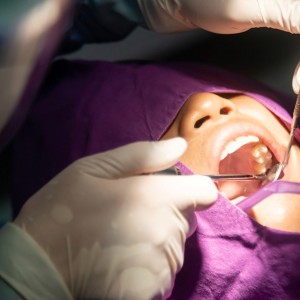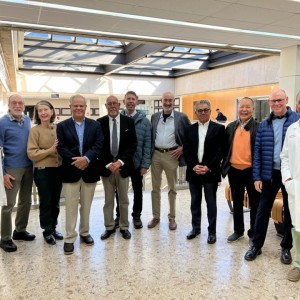
Maxillary Third Molar Extraction: Two Techniques Compared
Simona Chirico
Maxillary third molar extraction is commonly performed in dental clinics. The traditional techniques is a combination of luxation and removal forces with respectively elevator and forceps. This practice involves the manipulation of both hard and soft tissue that could be affected by various postoperative complications. These include pain, swelling, bleeding, alveolar osteitis, maxillary tuberosity fracture and many others. Therefore, reducing the incidence of these complications becomes essential. Designing and analyzing a treatment plan could help the interception of them but even the development of new surgical technique or new design of instruments have enabled the clinician to manage the extraction with less accidents.
This study published on Journal of Maxillofacial and Oral Surgery, introduced a new extraction technique of upper third molars, Joedds technique, in comparison with the traditional method.
Methods and Material
One hundred people were selected for the study and randomly divided into two groups. Patients in the age groups of 18–50 years only were included. All extractions were performed by the same surgeon.
- Control group: conventional technique of maxillary third molar extraction was used;
- Experimental group: Joedds technique of maxillary third molar extraction was performed using lower cowhorn forceps (#217).
The analyzed variables were: time for extraction, trauma to surrounding soft tissues, root fracture and tuberosity fracture. Analysis was done by student’s t test.
Results
After extractions, analysis of 50 patients who underwent Joedds technique showed that they had minimal trauma to both soft and hard tissues, less tuberosity and root fractures and the time taken for extraction was <2 min.
Conclusion
Extraction of maxillary third molar using #217 lower cowhorn forceps seems to be a good technique to minimize trauma and to reduce complications in the proper case. Indeed it cannot be use neither in isolated nor in grossly decayed molar extractions.
For additional informations: Comparing the Efficiency of Two Different Extraction Techniques in Removal of Maxillary Third Molars: A Randomized Controlled Trial
 Related articles
Related articles
Antibiotic prophylaxis (AP) still represents a common but often misused procedure in dental practice, thus aggravating the risk for antimicrobial resistance and adverse effects occurrence.
Oral surgery 27 October 2025
The authors assessed the incidence of postoperative bleeding in patients who were highly anticoagulated and in patients who underwent extensive oral surgical procedures and who continued using oral...
Implantology 02 October 2025
Proper implant treatment planning remains the first priority for implant success. Dental imaging is an important tool to accomplish this task.
Oral surgery 05 September 2025
Fentanyl, a short-acting synthetic opioid, has a pharmacokinetic profile suited to fast relief of brief episodic pain.
Oral surgery 22 August 2025
Thiel embalming technique: a valuable method for teaching oral surgery and implantology
Because of its high requirements on surgical experience and the need of complete understanding of the anatomy, oral surgery and especially implantology belong to the most demanding procedures in...
 Read more
Read more
Digital Dentistry 19 November 2025
Increasing awareness of tooth fracture, both complete and incomplete, as a significant disease entity has led to improved diagnostic techniques.
Editorials 19 November 2025
As Ellen Simmons-Shamrell of the Class of 1977 wrote her annual check for the Michael D. Scotti, DMD Endowed Scholarship—established in memory of her late classmate—she reflected on how different...
Products 19 November 2025
Smartee Denti-Technology has unveiled the Smartee Digital Orthodontic Technology Exhibition Hall, a 1,200-square-meter space dedicated to showcasing the company’s innovations in clear aligner...
News 19 November 2025
Coupa, the global leader in AI-powered spend management, today announced a new collaboration with Specialized Dental Partners, a premier dental support organization (DSO) dedicated to enabling its...
News 19 November 2025
Breakthrough T1D has been selected as a 2025 Health Access Hero Award grant recipient by Sun Life U.S. and DentaQuest.















